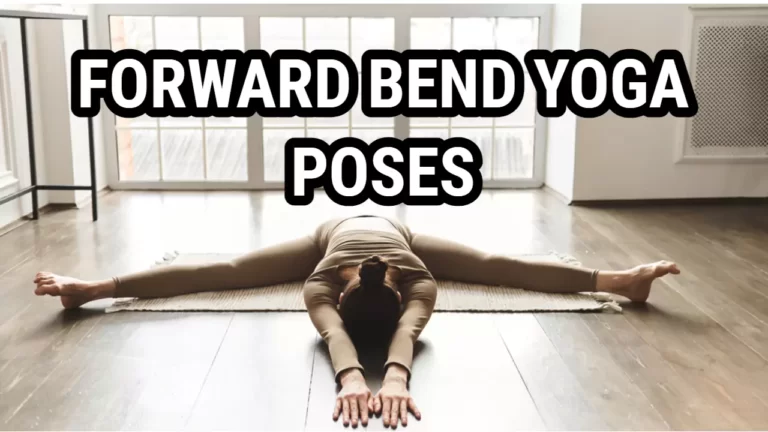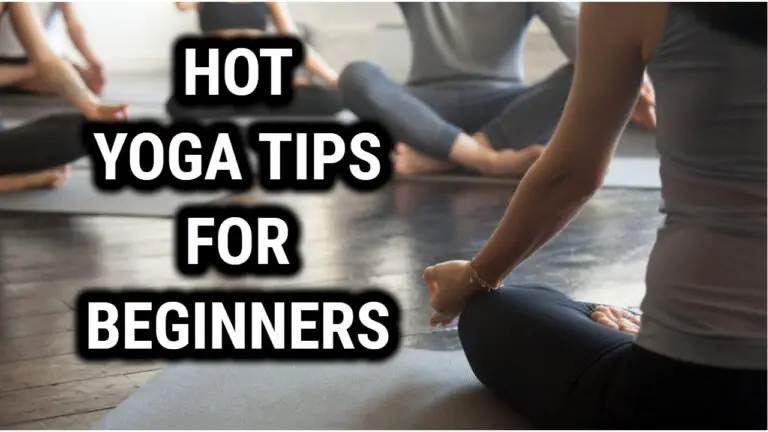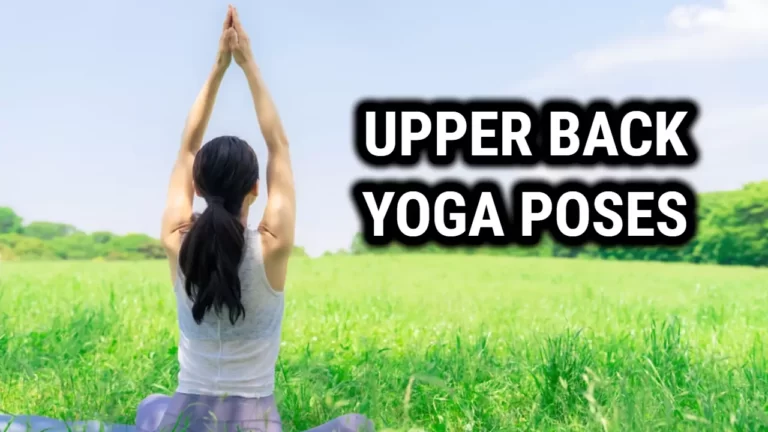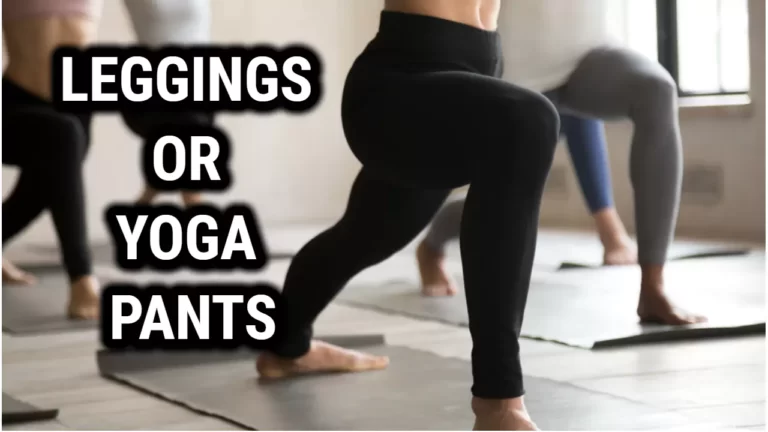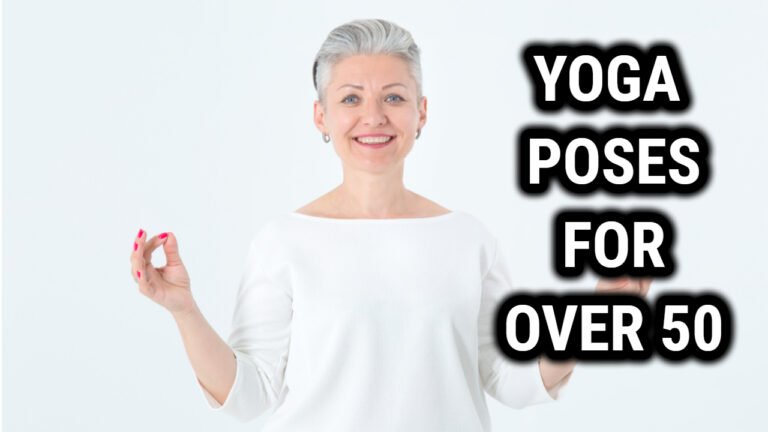Journey to Inner Peace with Dhyana Yoga Poses: Unlock Your True Potential

Have you ever heard of Dhyana Yoga? It’s a form of yoga that emphasizes mindfulness and meditation. It uses physical postures, breathing techniques, and meditation to bring balance and harmony to the body and mind. If you’re looking for an effective way to improve your mental and physical health, then this could be the perfect fit for you!
We will explore Dhyana Yoga poses in detail. We’ll look at some of the most popular poses and their benefits. We’ll also provide step-by-step instructions so that you can practice these poses accurately. By understanding the principles behind Dhyana Yoga, you’ll be able to enhance its effects on your body and mind.
So if you’re ready to learn more about Dhyana Yoga poses and how they can help you achieve optimal health, read on!
What is Dhyana Yoga
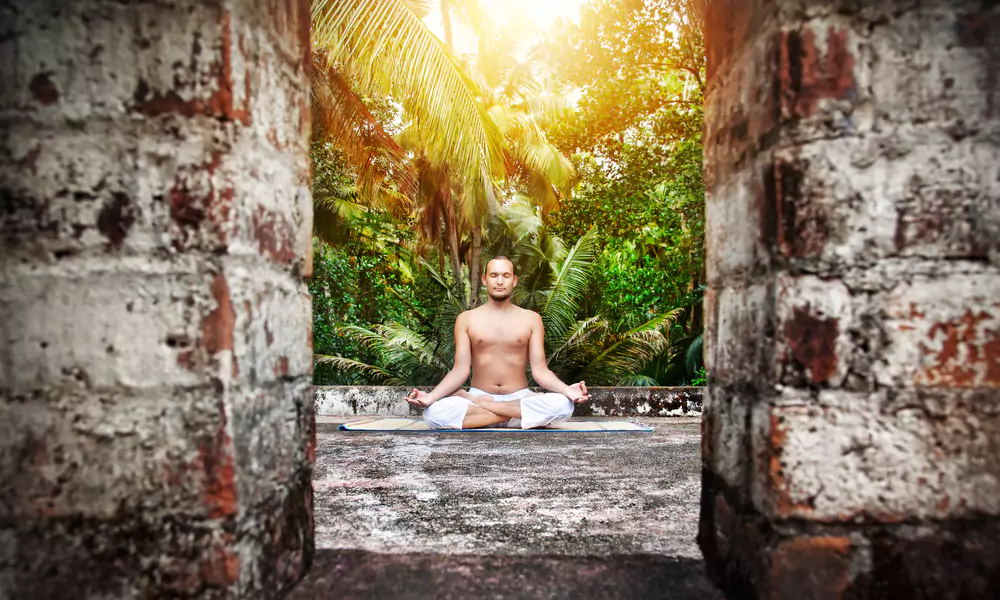
Yoga is an ancient practice with a wide variety of forms, from physical postures to meditation. Dhyana yoga is one of these forms and is the practice of meditation in yoga. The purpose of this type of yoga is to aid in achieving inner peace and balance through mindfulness.
The basic definition of yoga, according to the Yoga Sutras, is “the stilling of the fluctuations of the mind”. This means that by calming or focusing the mind, one can achieve a state of awareness that transcends ordinary consciousness.
Dhyana yoga seeks to deepen this experience by focusing on different types poses and breathing techniques. Each pose has its own meaning and purpose, depending on its particular characteristics.
In dhyana yoga, one attempts to bring their attention inward while they move through each pose. Through this practice, one can become more aware of their body and gain a deeper understanding of how thoughts influence emotions and actions.
Ultimately, this type of yoga helps cultivate clarity, presence, and inner peace that can be used in everyday life.
Benefits Of Dhayana Yoga Practice
Having a strong understanding of what dhyana yoga is, we can now explore the various benefits of engaging in this practice. One of the most important benefits of dhyana yoga is that it helps to foster a connection between the mind and body.
Through conscious breathing and postures, practitioners are able to gain a heightened sense of body awareness while grounding their minds in the present moment. This form of yoga also allows individuals to tap into their inner peace, providing them with an invaluable tool for stress management.
Not only does dhyana yoga offer physical and mental benefits, but it can also improve meditation practices as well. As practitioners become more aware of their bodies and how they move through space, this knowledge helps them to be better equipped when sitting for meditation.
Further, learning how to bring breath awareness into movement helps meditators to cultivate deeper insight during seated practice.
Overall, engaging in dhyana yoga provides many benefits that help us be both healthier and happier in life. By connecting with our bodies through mindful movement, we are able to access greater inner peace and mental clarity while strengthening our capacity for self-awareness.
All these elements combine together to create an overall sense of wellbeing that serves as an invaluable resource for managing stress and cultivating personal growth.
Pranayama Breathing Exercises
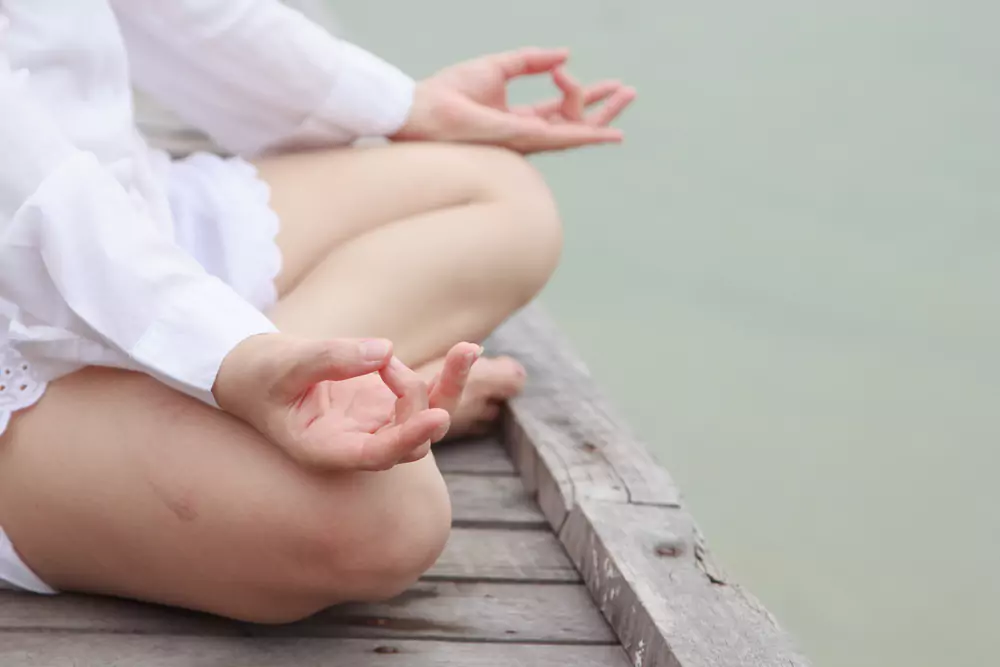
Pranayama is a powerful yoga practice that focuses on controlling the breath to bring about mental and physical balance. This type of breathing exercise is often used to enhance meditation, as deep breathing can help induce a relaxed state. Pranayama consists of several different exercises, each with its own set of benefits.
Nadi Shodhana Pranayama is a popular pranayama technique that helps to balance the flow of energy throughout the body. To do this exercise, you alternate between breathing in through one nostril and out through the other, while closing off one nostril at a time with your thumb or index finger. This exercise helps to clear blocked energy channels for better overall health and wellbeing.
Kapalbhati pranayama is a powerful yogic breathing technique that can be used for Dhayana (meditation) and relaxation. It helps to improve concentration and mental clarity, while also helping to reduce stress and anxiety.
To practice Kapalbhati pranayama for meditation, sit comfortably in a cross-legged position with your spine straight. Close your eyes and focus your attention on your breath. Begin by inhaling deeply and slowly through your nose, and then exhaling through your nose with a forceful, rhythmic contraction of your abdominal muscles.
Continue this pattern for several minutes, feeling the inhalation and exhalation of breath and allowing your mind to be still. When your mind becomes distracted, simply bring your focus back to your breath. As you practice, you may notice that your breath naturally begins to slow down, allowing you to settle into a peaceful, meditative state.
Udgeet Pranayam is a form of pranayama, or breath control, that is used to help with meditation and relaxation. It is a simple practice that involves repeating OM mantra as you inhale and exhale. The sound can be anything that is meaningful to you, but it is often ‘aum’.
As you practice, the focus should be on the sound and the rhythm of your breathing. Over time, your breath will naturally slow down and deepen, allowing you to enter a meditative state. This can help to reduce stress and anxiety, and can also be used to help with concentration and focus.
Pranayama breathing exercises are an important part of any yoga practice as they help to deepen your awareness and connection with yourself. Practicing these exercises regularly can have profound effects on both your physical and mental wellbeing, allowing you to enjoy greater peace and harmony in your life.
Dhyana Yoga Poses
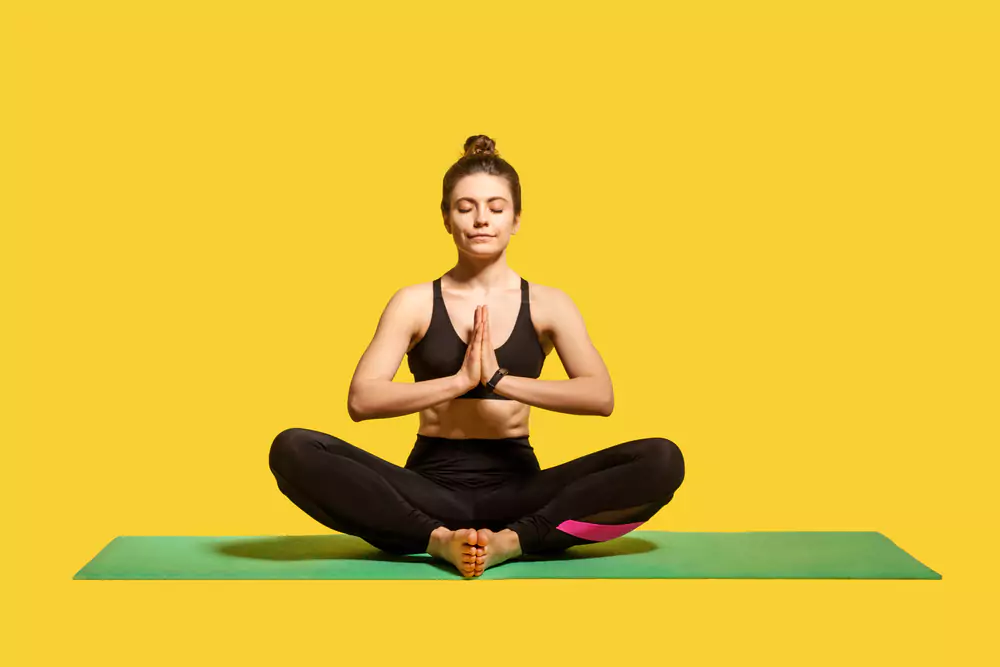
Dhyana yoga is a type of yoga practice that focuses on meditation. It is a form of yoga that is specifically designed to help practitioners increase their spiritual awareness. The following are some of the poses commonly used in Dhyana yoga:
- Sukhasana (Easy Pose)
- Padmasana (Lotus Pose)
- Savasana (Corpse Pose)
- Trataka (Gazing Practice)
Sukhasana (Easy Pose)
Sukhasana, or easy pose, is a classic yoga posture used for meditation. It is a comfortable seated position for grounding and centering the mind.
To practice sukhasana for dhyana yoga, start by sitting on the floor with your legs crossed, placing each foot underneath the opposite thigh.
Keep your spine and neck straight, and press your shoulders down and back, away from your ears. Rest your hands on your knees, palms facing up. Close your eyes, and take a few deep breaths. Begin to focus on your breath, feeling the air as it enters and leaves your body.
Once your breath has stabilized, you may bring your awareness to any thoughts or emotions that arise. Observe, without judgement, and accept what is. When you are ready, you can open your eyes and gently come back to the present moment.
Also Read: Meditative Yoga Poses for Inner Peace and Relaxation
Padmasana (Lotus Pose)
Padmasana, or Lotus Pose, is a fundamental yoga posture used in many meditative practices, such as dhyana yoga. It is a seated posture that is said to help the mind and body to become still and steady, allowing for meditation to be more easily achieved.
To perform the pose, start by sitting on the floor with your legs crossed in front of you. Place your hands on your knees and take a few slow, deep breaths. From here, bend your left knee and bring the foot up to the top of the right thigh, then repeat with the right knee and left thigh.
Make sure that your ankles are comfortably resting on the opposite thigh, and that your spine is kept straight. Finally, bring your hands together at the center of your chest in a mudra of your choice.
Stay in this position and focus your attention on your breath, allowing the thoughts to come and go without judgment or attachment. Use this pose as an opportunity to still your mind and body before beginning your meditation practice.
Savasana (Corpse Pose)
Savasana is a yoga relaxation pose, also known as the corpse posture. It is used to help with stress relief and meditation. To do Savasana, you must lay on your back with your feet hip-width apart and arms by your side, palms facing up.
Make sure you relax every part of the body – from your toes to the top of your head. Focus on releasing all tension from each area and in doing so, allowing yourself to slip into a deep state of relaxation.
It can be helpful to set a timer for five or ten minutes to stay in Savasana for an appropriate amount of time. During this time, focus on your breath and clear away any thoughts that may enter your mind.
As you become more comfortable with this pose, you can add props such as blankets or an eye pillow for extra comfort. You may even choose to keep a journal nearby if something meaningful pops into your head during this pose.
Savasana can provide many benefits including improved concentration, better sleep patterns and even lowered blood pressure. It is important to practice this pose regularly as it can help reduce stress levels and make it easier to maintain peace within both body and mind.
Trataka (Gazing Practice)

Trataka, or gazing practice, is a form of dhyana yoga that is used to help focus the mind and bring awareness to the present moment. The practice involves focusing one’s gaze on a single object, whether a candle flame, a picture, or a mandala, and allowing the eyes to remain on the object until the mind becomes still and focused.
The practice of trataka is said to help clear the mind of distractions and bring clarity to the meditative experience. To practice trataka, first find a comfortable seated position and begin to relax your body and focus your attention on your breath.
Once you are in a relaxed state, focus your gaze on the chosen object without blinking for a period of time (typically this will be between 1-5 minutes).
As you focus on the object, allow any thoughts or distractions to pass without judgment and without engaging with them. When the time is up, close your eyes and take a few moments to rest in the stillness before repeating the practice.
Related Read: What is Yoga Mudrasana – Benefits of Practicing Yoga Mudrasana
Conclusion
I’ve been practicing dhyana yoga for years now and it has truly changed my life. It’s amazing how the poses help to reduce stress and bring a deep sense of relaxation.
The stretching exercises help to promote flexibility and strengthen muscles, while the breathing techniques focus on calming the mind. As I move through each pose, I feel my body getting stronger and my mind becoming clearer.
The practice of dhyana yoga truly is remarkable. Every time I practice, it feels like I’m unlocking a little piece of myself that was hidden away.
It’s an incredibly powerful feeling that leaves me speechless every single time – it’s almost as if I’m soaring through the sky! With each pose, I’m able to leave behind any stress or worries and simply be in the moment.
Dhyana yoga has taught me so much about myself and how important it is to stay connected with my body and breath.
It’s been an incredibly valuable journey that I wouldn’t trade for anything in the world – this practice has allowed me to find balance within myself and live life with a renewed sense of excitement and passion.
